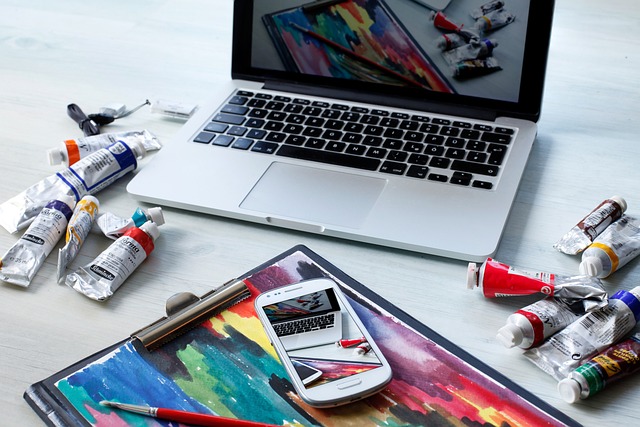In the ever-evolving landscape of design, technological advancements continue to reshape the way creatives conceptualize, create, and deliver their work. One of the most significant advancements in recent years is the emergence of artificial intelligence (AI) tools tailored for designers. These tools offer a plethora of features and functionalities, empowering creatives to streamline their workflows, unleash their creativity, and bring their ideas to life like never before.
Understanding AI in Design
Artificial intelligence in design encompasses a range of technologies that leverage machine learning algorithms to perform tasks traditionally carried out by humans. These tasks include image recognition, natural language processing, predictive analytics, and more. By harnessing the power of AI, designers can automate repetitive tasks, generate design variations, analyze data for insights, and even predict future trends.
Automation in Design Workflow
One of the primary benefits of AI in design is automation. AI-powered tools can automate mundane and time-consuming tasks such as image cropping, color adjustments, and font selection, allowing designers to focus on more creative aspects of their work. For example, tools like Adobe Sensei and Canva’s Magic Resize feature utilize AI algorithms to automatically adjust designs for different formats and platforms.
Generative Design
Generative design is another area where AI is making waves in the design industry. By inputting parameters and constraints, designers can use AI algorithms to generate countless design variations based on predefined criteria. This approach not only saves time but also stimulates creativity by offering unexpected solutions. Autodesk’s generative design tools, for instance, enable designers to explore numerous design possibilities for products, buildings, and more, ultimately leading to innovative outcomes.
Data-Driven Design Insights
AI can also provide valuable insights to designers by analyzing large datasets and identifying patterns and trends. By leveraging data analytics and machine learning, designers can gain a deeper understanding of user behavior, market trends, and design preferences. Tools like Google Analytics and Hotjar offer robust analytics capabilities, while AI-driven platforms like Adobe Analytics provide actionable insights to inform design decisions and optimize user experiences.
Free AI Tools for Designers
While AI-powered design tools were once reserved for large corporations with hefty budgets, the landscape has shifted, and many free AI tools are now available to designers of all skill levels. These tools democratize access to advanced design capabilities and empower creatives to explore new possibilities without financial barriers.
Canva
Canva is a popular online graphic design platform that offers a range of AI-powered features, including automatic image cropping, design resizing, and text layout suggestions. With its intuitive interface and extensive library of templates and assets, Canva makes it easy for designers to create professional-looking designs for various purposes, from social media posts to presentations.
Remove.bg
Remove.bg is a simple yet powerful AI tool that automatically removes the background from images in seconds. This tool saves designers valuable time that would otherwise be spent manually editing images in Photoshop or other image editing software. Whether you’re creating product photos, portraits, or marketing materials, Remove.bg streamlines the process of isolating subjects and creating clean, polished images.
Artbreeder
Artbreeder is an AI-powered platform that allows designers to generate unique digital artworks by combining and remixing existing images. Using advanced generative algorithms, Artbreeder enables users to explore endless creative possibilities and create visually stunning compositions with just a few clicks. From abstract patterns to surreal landscapes, Artbreeder sparks inspiration and encourages experimentation in the digital art realm.
Vecteezy Editor
Vecteezy Editor is a free online vector graphics editor that leverages AI technology to simplify the process of creating vector illustrations. With its user-friendly interface and AI-driven tools, Vecteezy Editor makes it easy for designers to create custom illustrations for websites, presentations, and print materials. Whether you’re a seasoned illustrator or a novice designer, Vecteezy Editor offers a range of features and templates to bring your ideas to life.
The Impact of AI on the Design Industry
As AI continues to permeate the design industry, its impact on the profession and the broader creative landscape cannot be overstated. While some fear that AI will replace human designers altogether, the reality is far more nuanced. AI has the potential to augment human creativity, enhance productivity, and unlock new possibilities for design innovation.
Augmented Creativity
Rather than replacing human designers, AI serves as a powerful tool to augment their creativity and amplify their capabilities. By automating routine tasks and offering intelligent design suggestions, AI frees up designers to focus on higher-level thinking, experimentation, and innovation. This symbiotic relationship between humans and machines fosters a dynamic creative process where AI serves as a collaborator rather than a competitor.
Enhanced Productivity
AI-powered design tools are revolutionizing the way designers work by streamlining workflows and increasing efficiency. Tasks that once required hours of manual labor can now be completed in a fraction of the time, thanks to automation and machine learning algorithms. This increased productivity not only enables designers to meet tight deadlines and deliver projects faster but also allows them to allocate more time to creative exploration and iteration.
Design Accessibility
One of the most significant implications of AI in design is its role in democratizing access to design tools and resources. By offering free or affordable AI-powered tools, companies are leveling the playing field and empowering aspiring designers from diverse backgrounds to pursue their creative passions. This democratization of design not only expands the talent pool but also fosters a more inclusive and equitable creative community.
Conclusion
The future of design is undeniably intertwined with artificial intelligence. As AI technologies continue to advance and become more accessible, designers have unprecedented opportunities to push the boundaries of creativity, efficiency, and innovation. By embracing AI-powered tools and harnessing their potential, creatives can navigate the evolving landscape of design with confidence, adaptability, and a relentless pursuit of excellence. As we embark on this journey into the future of design, one thing is certain: the possibilities are limitless, and the best is yet to come.






